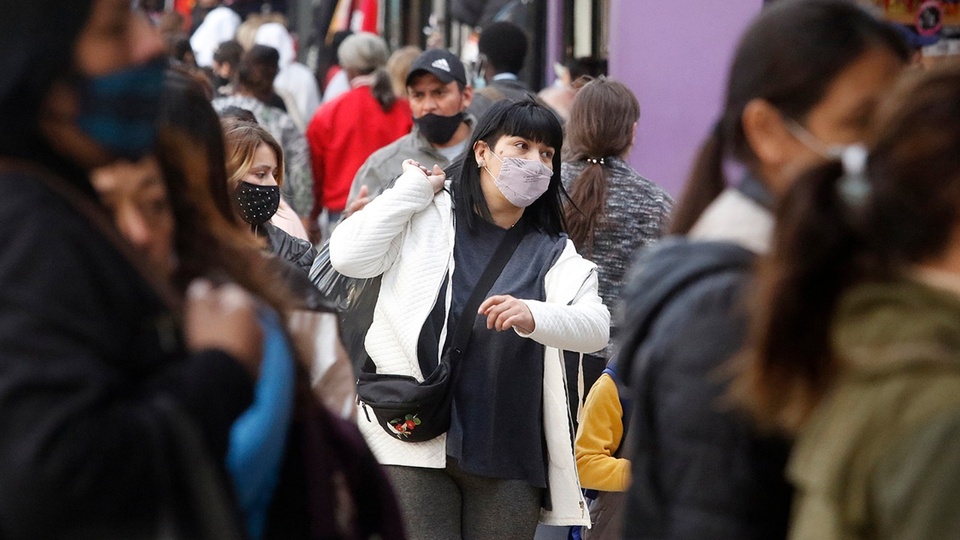
[ad_1]
Coronavirus variants Gamma (Manaus) and line C.37 (Andina) recorded an increase in the frequency of case detection in the metropolitan area of Buenos Aires (AMBA), while no mutation of the Beta (South Africa) or Delta (India) variant was detected, according to specified the last report of the PAIS project on the surveillance of SARS-CoV-2 variants from the Nation’s Ministry of Science, Technology and Innovation.
Report number 23 was made with data obtained between April 2 and May 19, with 341 samples and whole genome sequencing in 48 samples Obtained from residents of the City of Buenos Aires (CABA), Province of Buenos Aires, Córdoba, Entre Ríos, Neuquén and Santa Fe.
“It is very important to stress that an increase in the frequency of detection of Gamma variants (P.1, Manaus) and of the C.37 line (Andina) was observed Yes a stabilization of the frequency of the Alpha variant, (B.1.1.7, United Kingdom) in the Buenos Aires metropolitan area (AMBA) in recent epidemiological weeks in cases with no epidemiological link with tourism abroad, ”the report said.
The Gamma variant (P.1, Manaus) reached frequencies above 35% in CABA and 27% in Greater Buenos Aires (GBA), while line C.37 (Andina) reached 42% in CABA and 32% in the GBA.
As for the Alpha variant of the coronavirus (B.1.1.7, United Kingdom), decreased its frequency less than 10 percent in CABA and 15 percent in GBA. Likewise, during this period, less than 6% (CABA) and 5% (GBA) of the cases analyzed belonged to the other variants or had mutations of interest.
On the other hand, the Gamma variant (P.1, Manaus) was recorded in 181 cases: 51 come from CABA, 52 cases from GBA (nine from GBA North, 17 from GBA West and 26 from GBA South) and 12 from inside PBA. In addition, 13 cases corresponded to the province of Entre Ríos, 24 cases to the province of Neuquén, 14 cases to the province of Santa Fe and 13 cases to the province of Córdoba.
All of these cases correspond to infections of individuals without a history of travel abroad or close contact with travelers.
The combination of mutations compatible with the C.37 line or An “Andean variant” has been identified in a total of 127 cases. About 50 cases are from CABA, 56 cases from GBA (five from GBA North, 19 from GBA West and 32 from GBA South), four from inside PBA.
Two cases corresponded to the province of Entre Ríos, six in Neuquén and seven in Córdoba. All correspond to infections of individuals without a history of travel abroad or close contact with travelers, with the exception of two cases from the province of Cordoba who presented with a history of travel to Mexico and the Dominican Republic.
Finally, the study showed that The combination of characteristic mutations of the Beta variant (B.1.351, South Africa) and of the Delta (B.1.617.2, India) was not detected.
From these results, The PAIS project considered that the Andean variant should “be considered at least as a variant of regional interest, given the sustained increase in its frequency of detection in the AMBA region during the last epidemiological weeks. as has also been observed in countries in the region such as Peru and Chile ”.
PAIS project
Created by the French Ministry of Science, Technology and Innovation, the Interinstitutional Consortium for Genome Sequencing and Genomic Studies of SARS-CoV-2 (PAIS Project) is made up of research groups from different institutions with the aim of sequencing the genome and performing other genomic studies on SARS-CoV-2.
Coordinated by Dr Mariana Viegas of the Virology Laboratory of the Ricardo Gutiérrez Children’s Hospital, the team works jointly and in collaboration to conduct genomic studies of SARS-CoV-2 in our country and contribute to both local knowledge and the global virus circulation database GISAID (Global Influenza Data Sharing Initiative).
New ways to name variants
On May 31, the World Health Organization announced new ways of calling the variants of Covid-19. The reasons for this change include the existence of different genomic nomenclatures that are difficult to communicate due to their complexity and the potential stigma of the labels assigned to countries or areas of detection.
This is why new labels based on the Greek alphabet have been assigned to the variants to name them around the world.
.
[ad_2]
Source link
 Naaju Breaking News, Live Updates, Latest Headlines, Viral News, Top Stories, Trending Topics, Videos
Naaju Breaking News, Live Updates, Latest Headlines, Viral News, Top Stories, Trending Topics, Videos